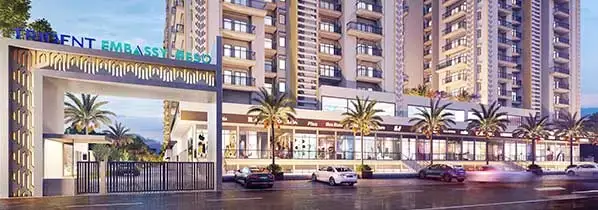
Why Community Matters in Real Estate Development
The real estate industry has traditionally been viewed through a purely transactional lens. However, the tide is turning. Today, successful real estate developments are no longer solely defined by architectural grandeur or prime location. They are increasingly synonymous with creating thriving communities that resonate with the aspirations and needs of their residents. The realization is dawning that a thriving community is the cornerstone of a successful real estate venture.
Understanding the Community-Centric Approach
Before a single brick is laid, a deep understanding of the community is paramount. This involves more than just demographic data; it's about immersing oneself in the community's culture, history, and aspirations. This understanding informs every decision, from site selection and project design to marketing and post-occupancy management.
Needs Assessment: Identifying the community's unmet needs is crucial. Is there a shortage of affordable housing? Are there gaps in healthcare or education? Understanding these needs allows developers to create projects that directly address community challenges.
Cultural Sensitivity: Incorporating elements of the local culture into the development can foster a sense of belonging. This could be anything from using local materials to designing spaces that reflect the community's aesthetics.
Community Engagement: Building Trust and Support
Community engagement is the cornerstone of successful real estate development. By involving local residents, businesses, and stakeholders from the outset, developers can build trust and garner support for their projects.
- Early Consultation: Engaging the community early in the planning process helps identify local needs and concerns. This proactive approach can prevent potential conflicts and delays.
- Transparent Communication: Keeping the community informed about the project's progress, timelines, and potential impacts fosters transparency and trust.
- Feedback Mechanisms: Providing platforms for community feedback, such as town hall meetings and online surveys, ensures that the voices of the residents are heard and considered.
Local Partnerships: Leveraging Local Knowledge and Resources
Forming partnerships with local organizations, businesses, and government entities can significantly enhance the success of a real estate development.
- Collaborative Planning: Working with local authorities and organizations can help align the project with regional development plans and zoning regulations.
- Utilizing Local Resources: Sourcing materials and labor locally not only supports the local economy but also ensures that the project is culturally and environmentally sensitive.
- Community-Based Initiatives: Partnering with local nonprofits and community groups can lead to initiatives that benefit the wider community, such as affordable housing and community centers.
Sustainable Practices: Creating Long-Term Value
Sustainability is a key factor in the long-term success of real estate developments. Sustainable practices not only reduce environmental impact but also create value for the community and developers.
- Green Building Standards: Adopting green building standards, such as LEED certification, can improve energy efficiency and reduce the carbon footprint of the development.
- Smart Infrastructure: Incorporating smart technology in infrastructure, such as energy-efficient lighting and waste management systems, enhances the livability and sustainability of the community.
- Environmental Conservation: Preserving green spaces and natural habitats within the development promotes biodiversity and provides recreational spaces for residents.
Community-Focused Design: Enhancing Quality of Life
Designing with the community in mind leads to spaces that enhance the quality of life for residents and foster a sense of belonging.
- Mixed-Use Developments: Creating mixed-use developments that combine residential, commercial, and recreational spaces encourages social interaction and reduces the need for commuting.
- Accessible and Inclusive Design: Ensuring that developments are accessible to people of all ages and abilities promotes inclusivity and enhances the overall livability of the community.
- Cultural Sensitivity: Incorporating elements of local culture and heritage into the design fosters a sense of identity and pride among residents.
Case Studies: Successful Community-Centric Developments
Examining successful real estate developments that have effectively integrated community involvement provides valuable insights and best practices.
- Example 1: The High Line, New York City: The transformation of an abandoned railway line into a vibrant public park was driven by community advocacy and involvement, resulting in a space that is cherished by both locals and tourists.
- Example 2: Medellín's Urban Transformation, Colombia: Community-led initiatives and local government collaboration turned one of the most dangerous cities into a model of urban innovation and social inclusion.
Conclusion
The role of community in real estate development is multifaceted and essential. Engaging with the community, forming local partnerships, adopting sustainable practices, and designing with the community's needs in mind are all crucial elements that contribute to the success of real estate projects. By prioritizing these aspects, developers can create thriving, sustainable, and harmonious spaces that benefit everyone involved.









